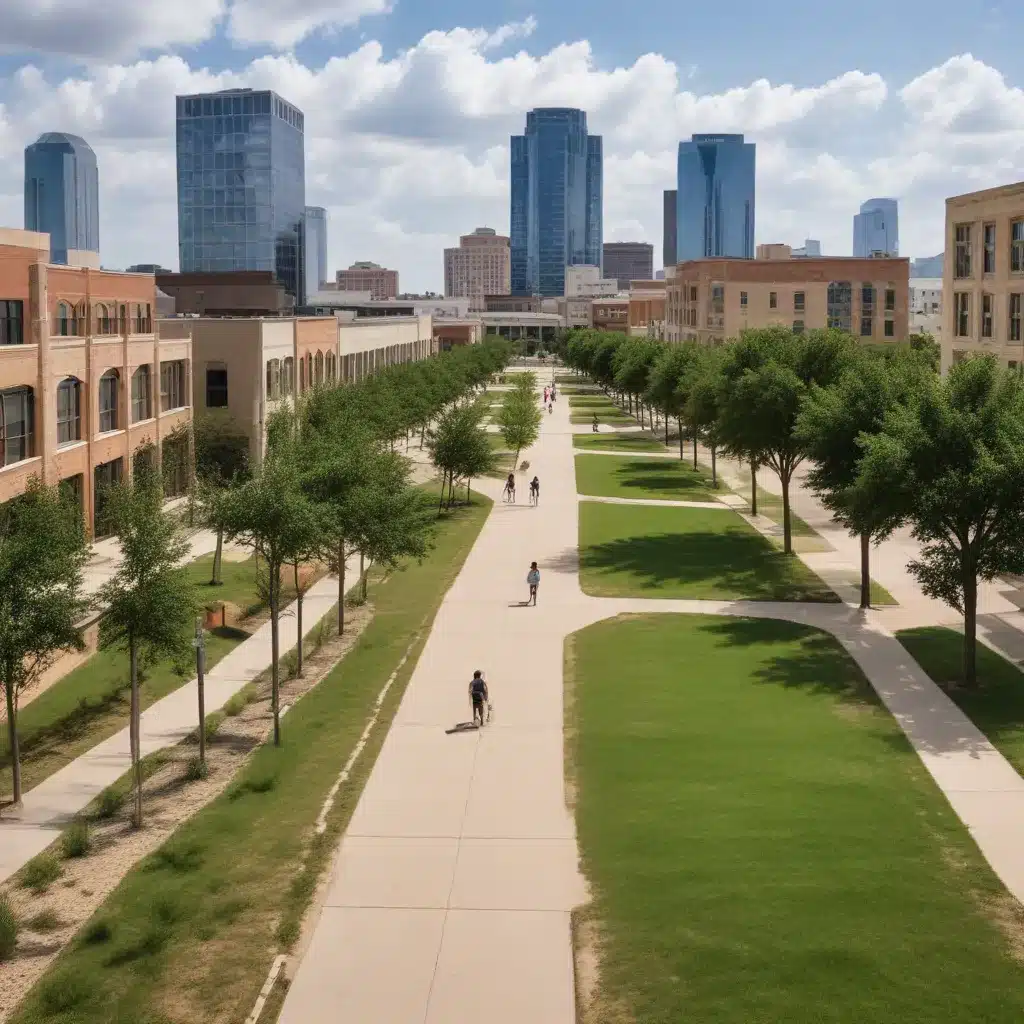
As an experienced home improvement consultant, I understand the delicate balance between preserving open spaces and accommodating the rapid growth and development needs of a thriving city like Fort Worth. Fort Worth’s officials and developers are actively exploring innovative ways to strike this balance, and the insights they offer can provide valuable guidance for other communities facing similar challenges.
The Importance of Open Space
Open spaces play a crucial role in maintaining the health and well-being of a city and its residents. These natural environments not only provide recreational opportunities but also deliver essential ecosystem services, such as improving air quality, managing stormwater runoff, and supporting biodiversity.
Preserving and enhancing Fort Worth’s network of parks, trails, and green spaces is a top priority for the city. Mayor Mattie Parker’s “Good Natured” initiative, launched in 2023, aims to acquire and preserve 10,000 acres of open space by 2028. This ambitious goal recognizes the intrinsic value of these natural assets and their ability to enhance the quality of life for Fort Worth’s growing population.
Accommodating Development Needs
At the same time, Fort Worth is experiencing rapid population growth and a surge in commercial and industrial development. Meeting the housing, employment, and infrastructure demands of a thriving city requires carefully planned development projects. The city must find ways to accommodate this growth while protecting its cherished open spaces.
Bowie Holland and Travis Clegg, both members of the Real Estate Council of Greater Fort Worth, suggest that the city focus more on infill development or the redevelopment of existing inner-city sites, rather than expanding outwards into the city’s greenfield locations. This approach can help direct investment and resources towards revitalizing the urban core, enhancing the existing open space network.
Balancing Priorities
Assessing Current Land Use
Fort Worth’s current landscape is a mix of developed areas and open spaces. The city boasts an extensive network of 300 parks and 13,000 acres of open space, which may not be fully reflected in the Trust for Public Land’s park score report. This report, which ranks cities based on their parks and walkability, placed Fort Worth 91st out of the country’s 100 largest cities in 2024. However, the report does not account for Fort Worth ISD’s open space areas and privately owned but publicly accessible properties, which can create a misleading impression of the city’s actual open space availability.
Stakeholder Perspectives
Engaging with various stakeholders, including community members, developers, and city officials, is crucial in finding the right balance between open space preservation and development. Community members value the recreational, environmental, and aesthetic benefits of open spaces, while developers must consider the economic viability and practical needs of their projects.
Allison Docker, Fort Worth’s newly appointed “green space champion,” emphasizes the city’s intention to acquire open spaces that can be preserved with light amenities, such as trails and nature observation areas. This approach aims to strike a balance between preserving the natural character of these spaces and providing opportunities for public enjoyment.
Establishing a Vision
The city’s 2050 comprehensive plan, which is currently undergoing a major update, will play a pivotal role in shaping Fort Worth’s long-term vision for balancing open space and development. This plan will include a riparian conservation incentive program to protect the city’s vulnerable waterways and supplement the existing economic development incentive policy.
Policy and Regulation
Zoning and Land Use Policies
Effective zoning and land use policies are essential tools in managing the balance between open space and development. Fort Worth’s recent adoption of its first urban forestry master plan and the ongoing revisions to its urban forestry ordinance demonstrate the city’s commitment to protecting its valuable tree canopy and encouraging developers to set aside more open space within their projects.
Incentives and Partnerships
To encourage developers to participate in open space preservation efforts, Fort Worth has created an economic development incentive policy that allows the city to acquire or secure an amount of acreage equal to a developer’s building footprint. This policy aims to incentivize developers to incorporate open space elements into their projects, while also providing the city with the resources to conserve and manage these areas.
Additionally, the city is exploring public-private partnerships to further its open space conservation goals. Collaborations with entities like Texas Christian University, which is expected to release details of its long-term conservation plans, can leverage the resources and expertise of both the public and private sectors to achieve the city’s open space objectives.
Innovative Approaches
Compact Development Models
To accommodate growth while preserving open space, Fort Worth is exploring compact development models, such as mixed-use neighborhoods and vertical integration. These approaches optimize land use by combining residential, commercial, and recreational spaces within a smaller footprint, reducing the need for sprawling development.
Multifunctional Spaces
Another innovative strategy is the creation of multifunctional spaces that combine open space and built environment elements. This can involve the adaptive reuse of existing structures, transforming them into community hubs that integrate green spaces, recreational amenities, and sustainable design features.
By embracing these forward-thinking approaches, Fort Worth can strike a balance between preserving its natural assets and meeting the demands of its growing population and thriving economy. As the city continues to refine its policies, incentives, and partnerships, its experiences can serve as a model for other communities grappling with similar urban planning challenges.
To learn more about Fort Worth’s efforts to balance open space and development, I encourage you to visit the city’s website at www.fortworthtexas.gov or the Reluctant Renovator website at www.reluctantrenovator.com. Together, we can explore sustainable solutions that enhance the quality of life for Fort Worth’s residents and preserve the city’s natural heritage for generations to come.



